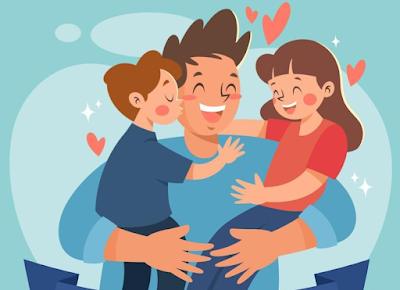Saturday, June 22, 2024
DO YOU KNOW
Friday, June 21, 2024
JUNE 21
International Yoga Day
International Yoga day is celebrated every year on June 21st. This special day highlights the importance of yoga, an ancient practice that began in India over 5,000 years ago.
Yoga is a combination of physical postures, breathing exercises, and meditation that helps to keep both body and mind healthy. Yoga is not just about twisting and turning your body into different poses. It teaches us how to control our breath, relax our mind, and stay focused. Many people practice yoga to stay fit, reduce stress, and find inner peace.
International Yoga Day was first celebrated in 2015 after it was proposed by the Prime Minister of India, Narendra Modi, and adopted by the United Nations. Since then, millions of people from all around the world come together to practice yoga on this day. One of the great things about yoga is that anyone can do it, regardless of age or fitness level. There are simple poses which help with balance and stretching which improve flexibility. There are also more challenging poses for those who want to push their limits.
On International Yoga Day, many schools, parks, and community centres offer free yoga classes. These events often start with a peaceful meditation, followed by a series of yoga poses, and end with relaxation. It’s a wonderful opportunity for everyone to try yoga and experience its benefits.
Yoga also has a special connection to nature. Many people prefer to practice yoga outdoors, in a park or garden, where they can breathe fresh air and feel connected to the earth. This connection to nature helps to enhance the calming effects of yoga. Besides physical and mental benefits, yoga teaches important values like patience, perseverance, and mindfulness. It encourages us to listen to our minds and respect our bodies, promoting a sense of self-awareness and compassion.
Thursday, June 20, 2024
RHYTHMS OF THE WORLD
Celebrating music's universal language
World Music Day, also known as Fête de la Musique, is celebrated on June 21st every year. This international day of music is observed in over 100 countries, making it a global celebration of music and its power to bring people together.
On this day, people from all walks of life come together to play music, sing, and dance in the streets, parks, and public spaces. The event is marked by a series of concerts, jam sessions, and impromptu performances, featuring a wide range of genres and styles.
From classical to rock, pop to jazz, and traditional folk to experimental music, World Music Day showcases the diversity and richness of music from around the world. The event aims to promote cultural exchange, understanding, and harmony, and is a testament to the universal language of music that transcends borders and languages.
Music is a universal language that transcends borders and cultures. From African rhythms to Indian classical music, the world is a treasure trove of diverse musical styles. Salsa and bossa nova rhythms enter the scene, getting people moving, while Japanese enka ballads and Korean pop (K-pop) enter the global spotlight, gaining popularity. In Africa, Afro beat and high life rhythms enter the scene, blending traditional instruments with modern beats, while in the Caribbean, calypso and reggae music pulsate with island vibes.
Despite geographical differences, music has the power to unite people across cultures, languages, and continents. With its ability to evoke emotions, tell stories, and bring people together, music enters the hearts of people around the world. As a result, music is a true global language that will continue to inspire and delight us for generations to come.
Wednesday, June 19, 2024
A STORY FROM PANCHATANTRA
The Sly Cat
An eagle, a cat and a sow (female pig) all lived in the same tree. The eagle had made its nest on the topmost branches, the cat and her kittens lived in a hollow halfway down the tree, and the sow lived at the foot of the tree.
One day the cat said to the eagle, "Be careful! I've heard the sow is planning to raid your nest while you are away and carry away your chicks to feed to her piglets."
The eagle turned pale and from the next day on stopped going out to hunt. Then the sly cat said to the sow, "Have you noticed? The eagle has stopped going out. I've heard she's planning to feed your helpless piglets to her chicks while you're away. Be warned!"
The sow too stopped going out to feed. In a few days the young ones of both the eagle and the sow died of hunger. The sorrowing parents went away and the cat and her family had a feast.
Moral: Beware of mischief-makers.
Tuesday, June 18, 2024
A MESSIAH OF THE MASSES
Monday, June 17, 2024
REMEMBERING THE SUPERHERO OF OUR LIFE
Sunday, June 16, 2024
INSTRUMENT THAT FACILITATES COMMUNICATION
Lessons Wrapped in Wisdom
BITTER WORDS FROM ELDERS Sometimes, the most painful words from elders are the ones that stay with us the longest. They sting, yet they car...

-
ANNABELLE The real Annabelle doll is a well-known case of alleged paranormal activity, made famous by Ed and Lorraine Warren, two well-know...
-
WHY IS SUGAR WATER STICKY? Sugar water is sticky because sugar molecules have a strong affinity for water molecules, forming hydrogen bonds ...
-
WHY DO MEDICINES COME IN DIFFERENT FORM? Medicine is given in different forms because of the necessity for convenience or speed. It can be g...











